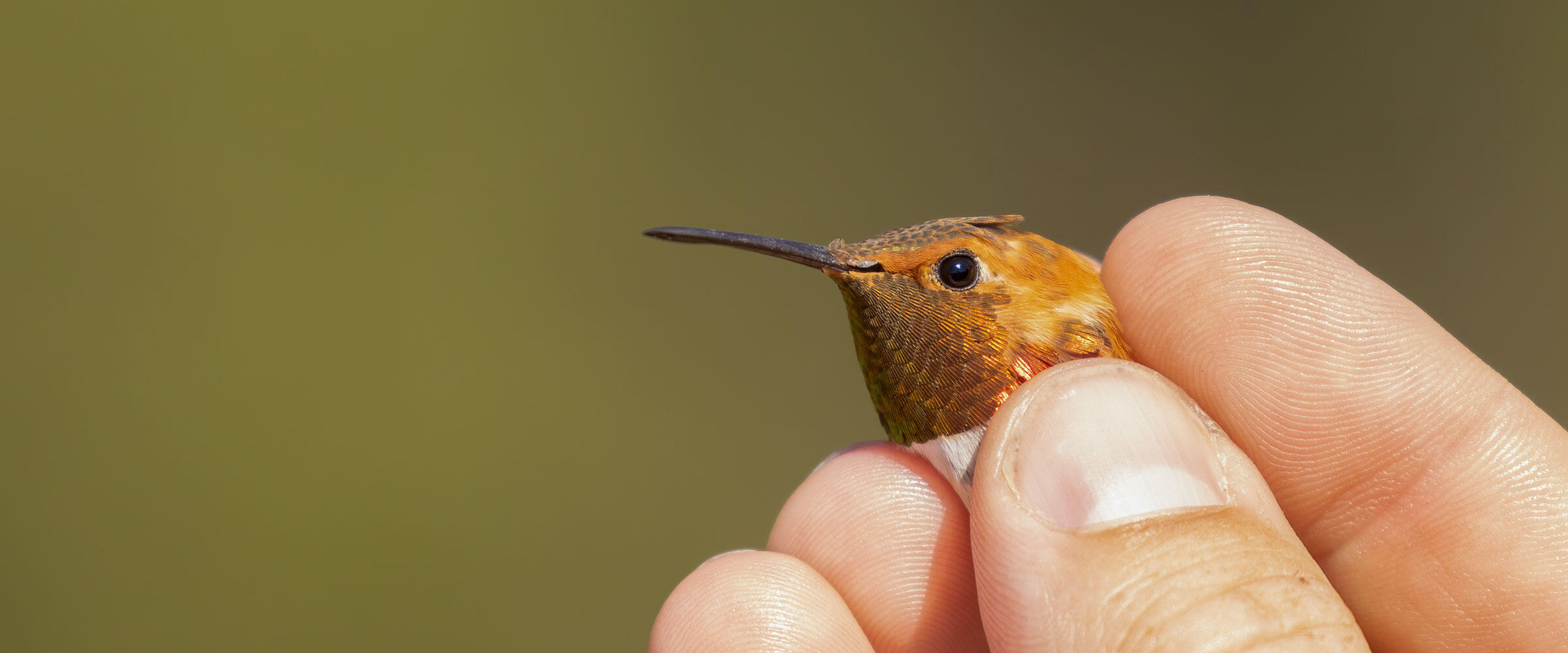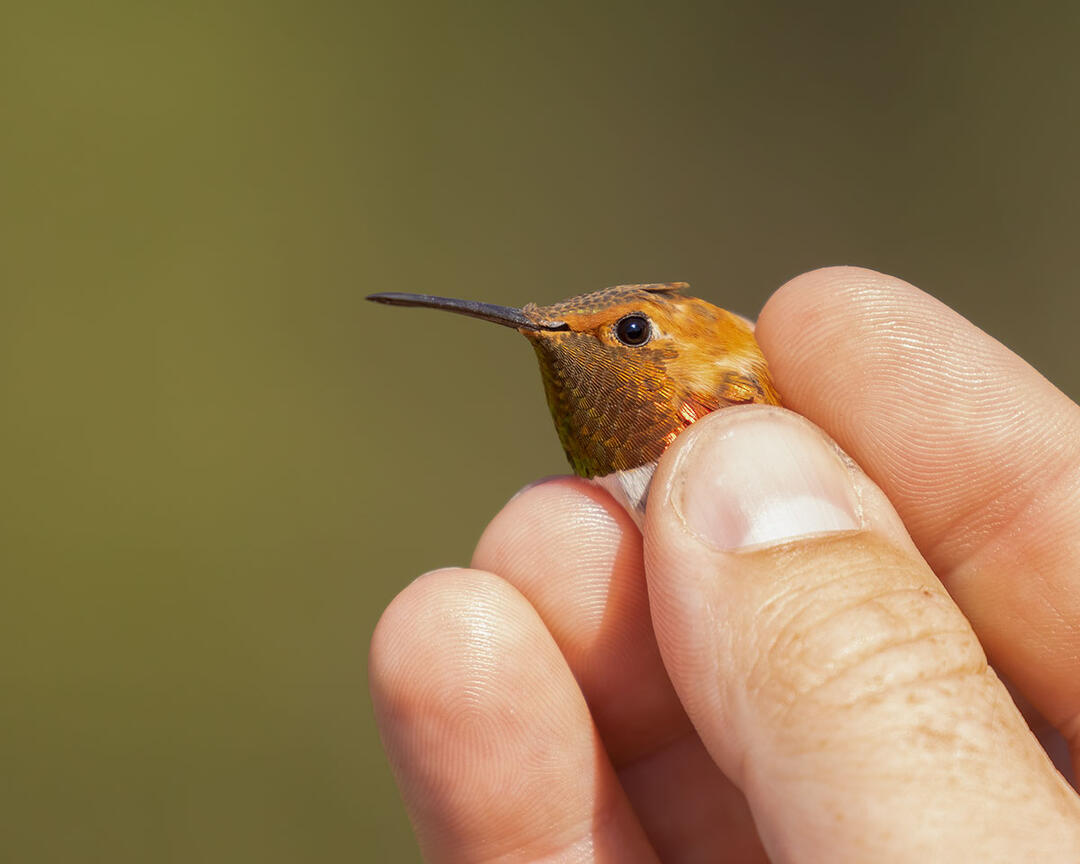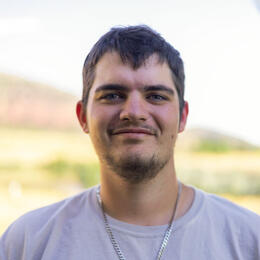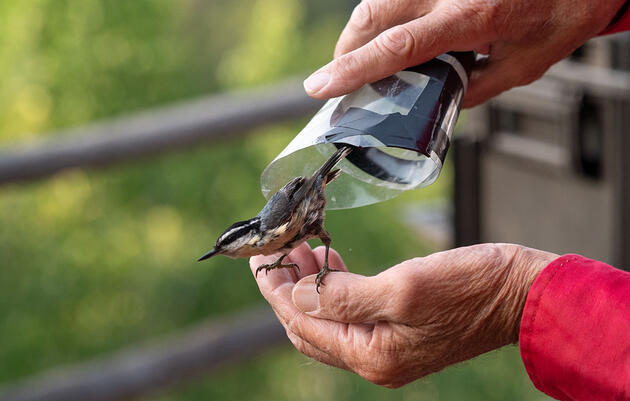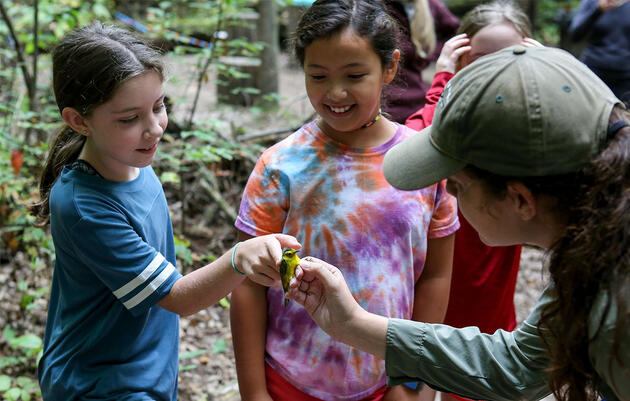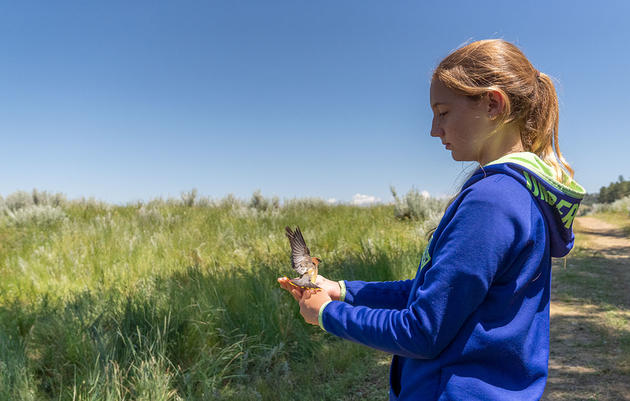The common phrase “A bird in the hand is worth two in the bush” is the truth. The movements of these species during local or international migration, reproduction rates, population trends, and diet can all be discovered with birds in hand. Making this of utmost importance to understand how bird populations are doing.
My name is Chris Johnson and I am a 20-year-old birder and conservationist from The Bahamas. This year I was granted the opportunity to train with Zach Hutchinson, Audubon Rockies’ community science coordinator, on how to run an effective banding station and process the data from migratory and resident songbirds. Although I am currently studying wildlife conservation at Holland College in Prince Edward Island, Canada; I hope to return home to The Bahamas to start a banding station there and begin collecting data on our residential and migratory bird species. The Bahamas does not currently have any active bird banding stations operated by a Bahamian. While there are some birds that have been researched in The Bahamas by United States and Canadian researchers, it is crucial to have a Bahamian citizen (who understands the local birds and their behavior) to begin this research for Bahamian avian conservation.
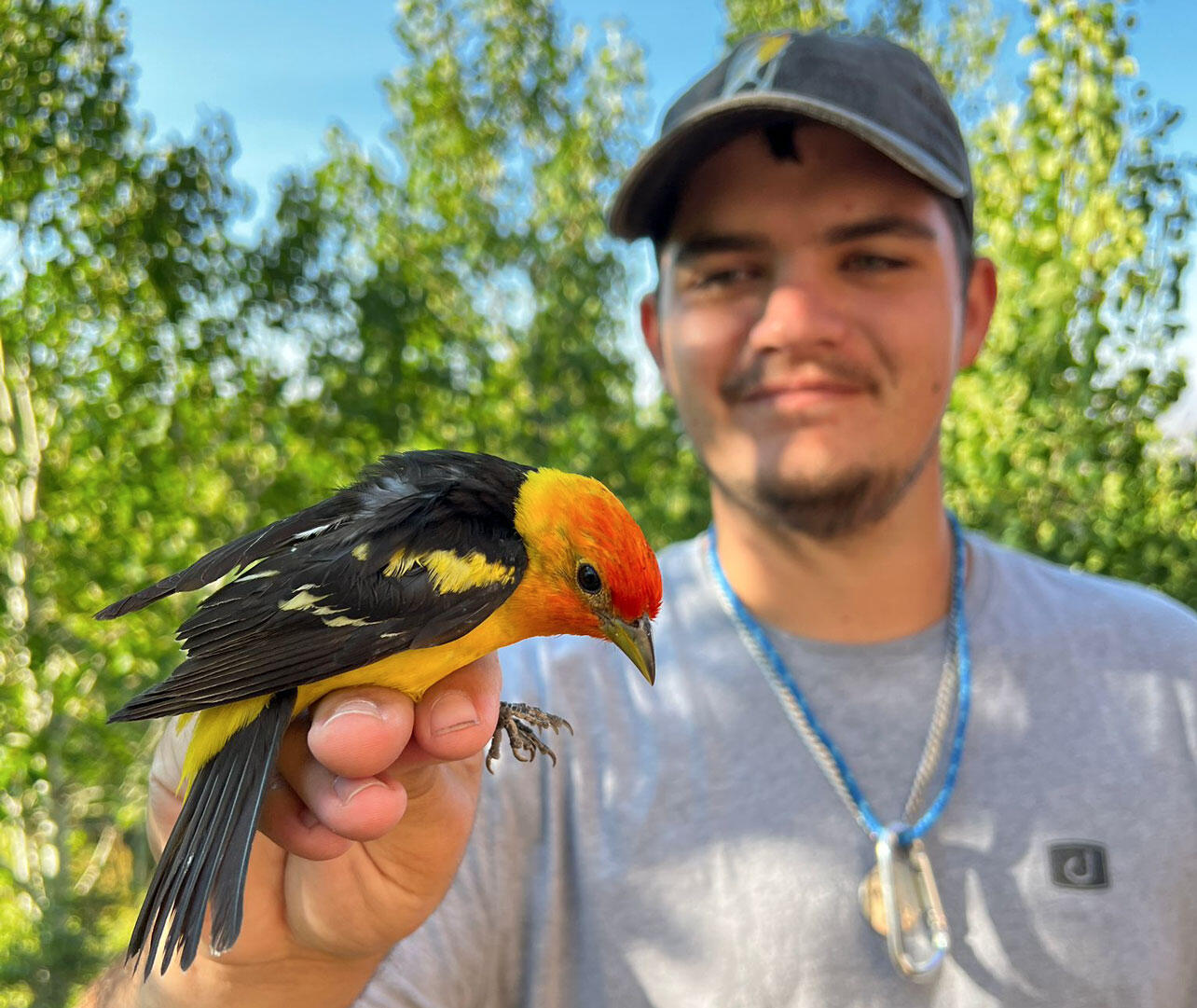
In March of 2022, I attended BirdsCaribbean’s first Bird Banding Training Workshop in Nassau, Bahamas, where I began to get my first experiences of bird banding and its ethical procedures. After the workshop concluded, I was invited to be a bird-banding intern in Casper, Wyoming, through BirdsCaribbean and Audubon Rockies. I was super excited to further my knowledge of bird banding and travel to one of my bucket list locations.
Upon arriving in Casper, my breath was taken away by the incredible landscape that I’d never seen before. The expansive grasslands with the contrasting hills and mountains were something I had always dreamt of seeing. I experienced new habitats such as riparian wetlands, grasslands, and subalpine forests, along with birds that inhabit them, such as Black-billed Magpies, Western Tanagers, and Black-Headed Grosbeaks. It was a sign of a great summer to come.
While the banding internship back at home served as an incredible introduction to the world of bird banding, every station operates a bit differently and uses slightly different methods for station setup, net setup and extraction, and processing of birds. Banding equipment in The Bahamas is quite different from the banding equipment that we used in Casper. Though the methodology of setting up an effective bird banding station is quite different, I can’t wait to utilize some of these new methods and tricks to enhance bird banding back at home!
I woke up on our first day of bird banding excited to begin banding new birds in a new location! Upon arrival at Edness K. Wilkins State Park, the temperature was a chilly 36 degrees. While we ended up having to wait an hour or two for it to warm up, our total number of extracted and processed birds was close to 60 individuals! In previous banding experiences back at home, more than 20 birds made for an extraordinary day. While it was the busiest banding day I’ve ever had, it was a great way to kick off the start of the banding season in Casper.
As I had very little experience in extracting, processing, and banding birds, the first few banding sessions helped me get a grasp on how to run an effective banding station while also refreshing my memory on bird banding ethics and bird safety.
Zach Hutchinson has been operating the bird banding stations in Casper for more than six years. His knowledge of how to run an effective bird banding station, extract and process various bird species, and train volunteers are comprehensive. As the Casper stations are quite small, Zach was able to extend his knowledge to me. I have learnt more about bird banding in the past three months from Zach and the folks at Audubon Rockies than I would have learnt in a year back at home!
In addition to banding at Edness K. Wilkins State Park, I also got the opportunity to band at Keyhole State Park and a site on Casper Mountain. The primary training I received was in banding songbirds but I also got great practice with hummingbird and Mourning Dove banding. Before this internship, I had only extracted a total of two birds from mist nets and banded one. After this internship, I can happily say that I have extracted approximately 105 birds and banded approximately 99! While I’m just starting my bird banding adventure, this bird banding internship has given me knowledge in extracting birds from mist nets; identifying molt stages of different birds; sexing and understanding the health of birds in hand; and using the new Wolfe, Ryder, Pyle (WRP) codes to accurately determine the age a bird.
While we extracted and banded many common Wyoming birds like Yellow Warblers, Common Grackles, and American Robins, some of my favorites for practicing extractions and processing would have to be House Wrens, Black-Capped and Mountain chickadees, Bullock’s Orioles, and Black-Headed Grosbeaks.
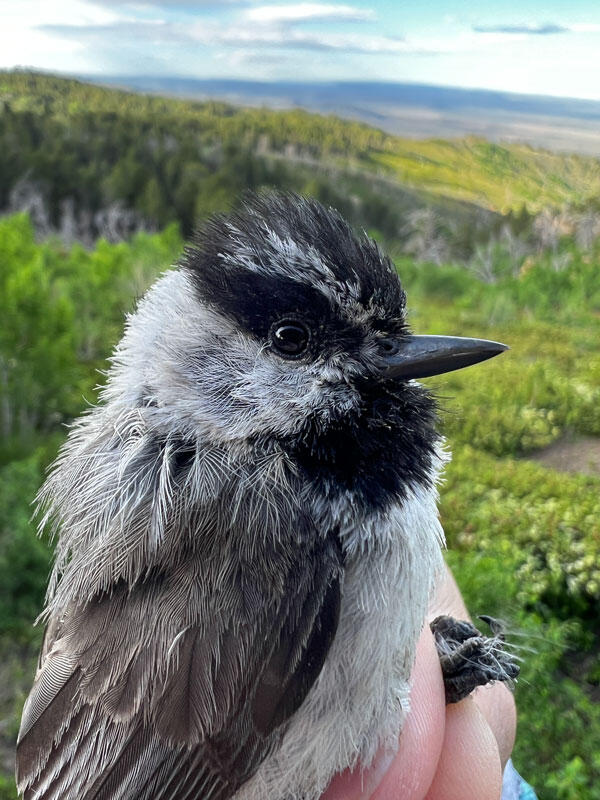
Although training on banding birds was the main reason for my internship, I also got the opportunity to see much of Wyoming on days off! A personal favorite would have to be the jaw-dropping Yellowstone and Grand Teton national parks. I also truly enjoyed attending my first ever BioBlitz (an event where students, teachers, volunteers, and scientists collaborate to survey as many species of flora and fauna in a particular area over the span of 24 hours) in Guernsey State Park and documenting the incredible fauna that Wyoming has to offer.
After attending this internship, my appreciation of bird banding has grown exponentially. I hope to continue practicing my bird banding skills before returning home to The Bahamas and starting my own MOSi (Monitoreo de Sobrevivencia Invernal/Monitoring Neotropical Migrants on their Wintering Grounds) stations and researching migratory, endemic, and range-restricted Bahamian bird species.
While I still have a lot to learn when it comes to bird banding, I can’t wait for the future of bird research in The Bahamas and how I can contribute to it.
Want to become a volunteer bird bander?
Sign up to be notified about training opportunities in Casper, Wyoming, or Keyhole State Park.

